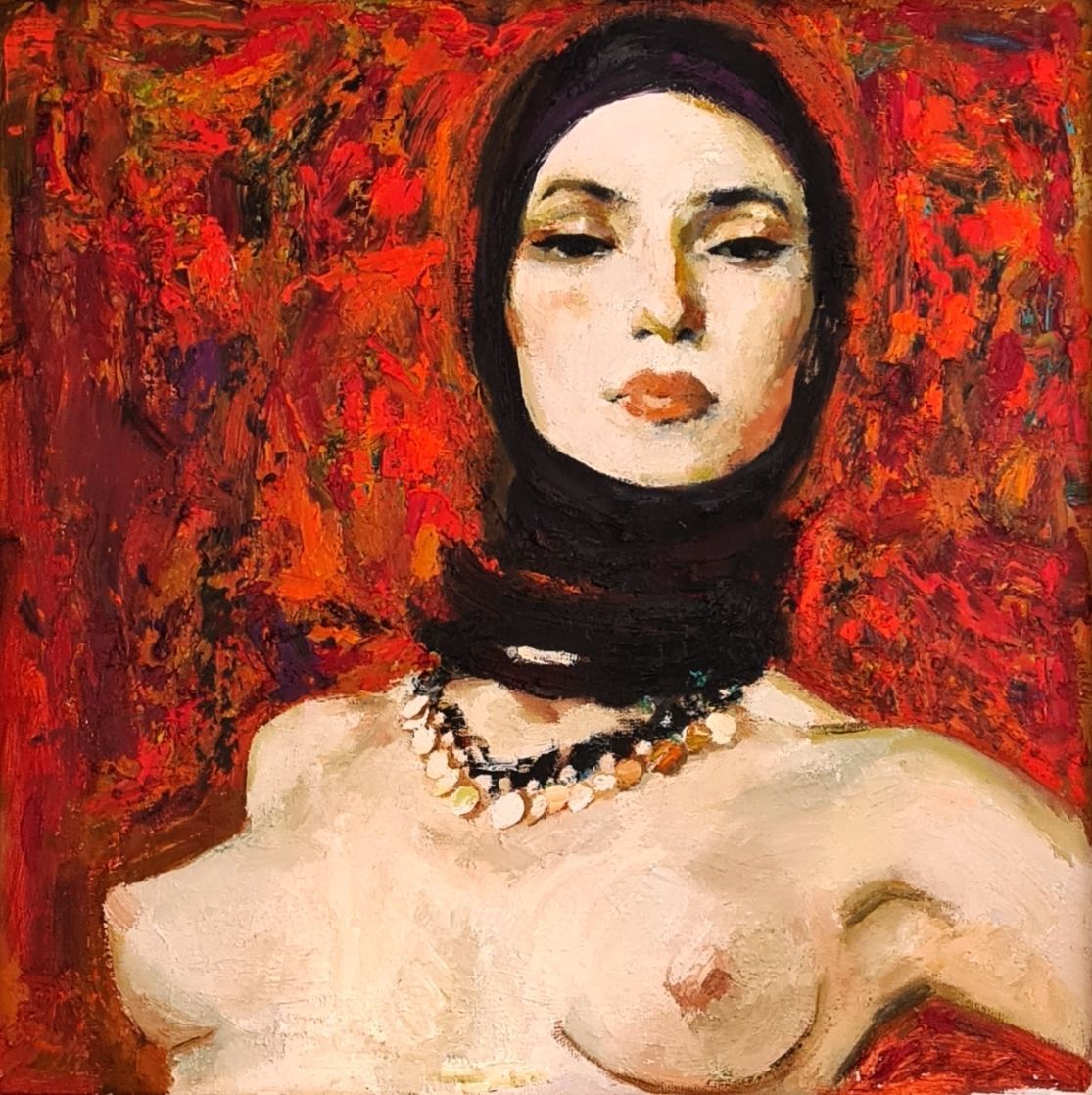Victor Teslaru
Narrator of the Sensual Universe of Nudity

Edited by Alexandra Mihalaș
Victor Teslaru, born in 1995, originally from the Republic of Moldova, graduated from the Igor Vieru Academic High School of Fine Arts in Chisinau (2015), after which, for two years, he perfected his painting skills and stylistic expressiveness in the private institution Academia de Stati Art painting (2017).
The artist made his appearance on the local and international artistic scene by participating in important collective exhibitions organized at the National Art Museum of Moldova (2017) and the Hungarian Embassy in the Republic of Moldova (2017), gradually evolving towards stylistic coherence complex enough to be represented in the Nudes (2022, Bucharest, Romania) and 18+ (2022, Chisinau, Republic of Moldova) personal exhibitions.
Through his creation, Victor Teslaru becomes a narrator of the sensual universe of nudity. His works discover and manipulate the subject of femininity through various forms and colors, each time presenting a new formula of the idea of sensuality.
With behind him a deep academic study of anatomy and pictorial techniques, in his works, Victor Teslaru, highlights the convergent thinking that makes us feel his characters present and alive. As a pendant to the corporeality of the characters, the artist relies on the flattened, impulsive, almost abstract background, which invites the viewer to experience and interpret it himself.
Evoking the words of the artist, in the subject of femininity, Victor Teslaru found his own solace, an expression of the fundamental calling of the artist - the representation of beauty as a mechanism for overcoming "Problems and pain, however they find us." I want to do something beautiful. In all the storm of problems, I feel the need to give people peace and enjoyment".
Analyzing the artist's creation conceptually, we can highlight two distinct stages.
The Woman/Character series presents archetypal images, with its own, extremely universal narrative, but at the same time, charged with a sublime individuality. In the paintings of this stage, the totality of the details that constitute a work of art - the chromatic structure, the position, the body language, the dynamics of the pictorial touches, is subject to the narrative of the great whole. The narrative of the artistic self and the history that lies beyond the painted character, invites the viewer to answer questions that go beyond the pictorial area, and tend towards the space of inter-human empathy, making the viewer wonder Who is the painted character? what is he thinking What happens?
This intimate experience generated by each work is the result of an eleven-year journey, during which the artist deepened the study of archetypal female representations, synthesizing this process in the image of complex psychological characters.
Evoking the analogy with the field of film, we can say that the Woman/Character painting series is a kind of stylistic venture for the culmination of Victor Teslaru's pictorial journey, and the work Full House (2023), the psycho-emotional core of this series.
The Glass Revolution series, inspired by the artist's interaction with Arabic and Muslim culture, reveals the drama of the devastating events that took place in Iran in 1979.
Victor Teslaru places your characters on the edge of the conflict between freedom and authority. Female personality and identity, being the battlefield between knowing and experiencing freedom, which Iranian women enjoyed until 1979, and which they were brutally forced to give up with the change of political regime.
This historical event, of maximum drama and suffering, was for the artist the starting point of a deep meditation on the contemporary state of being of women, with the multitude of subversive and related connotations of this subject. Thus, in the works of the artist Victor Teslaru, we find probably the most authentic representation of the woman, the one that maybe we don't always want to accept - subtle femininity, almost intangible, but at the same time very present and aware of its power. Dignity born from the recognition and acceptance of his sensuality, which beyond physical appearance, is the expression of an almost martyred spiritual courage.
MoBU
LEGAL
PRESS
Copyright© 2024 Kulterra, All Rights Reserved


